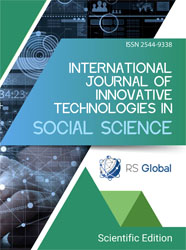A RARE FORM OF MYOCARDIAL INFLAMMATION – COMPLICATIONS WITH A VENTRICULAR ASSIST DEVICE AND SUCCESSFUL TRANSPLANTATION
Abstract
Giant cell myocarditis (GCM) is a rare, often fulminant inflammatory cardiomyopathy associated with rapid progression to advanced heart failure and high mortality. We report the case of a 52-year-old male with previously undiagnosed GCM who developed post-inflammatory cardiomyopathy leading to severe left ventricular dysfunction. Despite implantation of a cardiac resynchronization therapy defibrillator (CRT-D) and later a HeartMate III left ventricular assist device (LVAD) as a bridge to transplantation, the patient’s condition gradually worsened. Orthotopic heart transplantation was performed 5.5 years after diagnosis, with histopathological analysis of the explanted heart confirming GCM. Post-transplant follow-up over 16 months demonstrated preserved graft function, absence of recurrence, and stable clinical status. This case highlights the importance of histopathological evaluation of explanted hearts, the diagnostic challenges of atypical GCM, and the role of LVAD and heart transplantation in ensuring long-term survival.
Video 1. Transthoracic echocardiography showing severely impaired left ventricular contractility with a left ventricular ejection fraction. Watch video
References
Rehman, A. U., & Zhao, B. (2024, October). Giant cell myocarditis: Autopsy confirmation of a diagnostic dilemma—a rare case report. American Journal of Clinical Pathology, 162(Suppl. 2), S2–S2.
Gadela, N. V., Krishnan, A. M., Mukarram, O., & Sthalekar, N. (2021). Giant cell myocarditis. Proceedings (Baylor University Medical Center), 34(3), 401–402. https://doi.org/10.1080/08998280.2021.1874775
Cooper, L. T., & ElAmm, C. (2012). Giant cell myocarditis. Herz, 37(6), 632–636. https://doi.org/10.1007/s00059-012-3658-1
Ren, H., Poston, R. S. Jr., Hruban, R. H., Baumgartner, W. A., Baughman, K. L., & Hutchins, G. M. (1993). Long survival with giant cell myocarditis. Modern Pathology, 6(4), 402–407.
Ekström, K., Lehtonen, J., Kandolin, R., Räisänen-Sokolowski, A., Salmenkivi, K., & Kupari, M. (2016). Long-term outcome and its predictors in giant cell myocarditis. European Journal of Heart Failure, 18(12), 1452–1458. https://doi.org/10.1002/ejhf.606
Murphy, L., McGuckin, M., Giblin, G., Keogh, A., McGovern, B., Fabre, A., O’Neill, J., Mahon, N., & Joyce, E. (2021). The role of endomyocardial biopsy in suspected myocarditis in the contemporary era: A 10-year National Transplant Centre experience. Cardiovascular Pathology, 54, 107366. https://doi.org/10.1016/j.carpath.2021.107366
Stiermaier, T., Föhrenbach, F., Klingel, K., Kandolf, R., Boudriot, E., Sandri, M., ... Thiele, H. (2017). Biventricular endomyocardial biopsy in patients with suspected myocarditis: Feasibility, complication rate and additional diagnostic value. International Journal of Cardiology, 230, 364–370. https://doi.org/10.1016/j.ijcard.2016.12.040
Fallon, J. M., Parker, A. M., Dunn, S. P., & Kennedy, J. L. W. (2020). A giant mystery in giant cell myocarditis: Navigating diagnosis, immunosuppression, and mechanical circulatory support. ESC Heart Failure, 7(1), 315–319. https://doi.org/10.1002/ehf2.12564
Cooper, L. T. Jr., Berry, G. J., & Shabetai, R.; Multicenter Giant Cell Myocarditis Study Group Investigators. (1997). Idiopathic giant-cell myocarditis—Natural history and treatment. New England Journal of Medicine, 336(26), 1860–1866. https://doi.org/10.1056/NEJM199706263362603
van Haelst, P. L., Brügemann, J., Diercks, G. F., Suurmeijer, A., & van Veldhuisen, D. J. (2006). Serial right ventricular endomyocardial biopsy in rapid-onset severe heart failure due to giant cell myocarditis. Cardiovascular Pathology, 15(4), 228–230. https://doi.org/10.1016/j.carpath.2006.03.005
Views:
53
Downloads:
13
Copyright (c) 2025 Marcin Schulz, Rafał Skowronek, Alexander Suchodolski, Jerzy Nożyński, Mariola Szulik

This work is licensed under a Creative Commons Attribution 4.0 International License.
All articles are published in open-access and licensed under a Creative Commons Attribution 4.0 International License (CC BY 4.0). Hence, authors retain copyright to the content of the articles.
CC BY 4.0 License allows content to be copied, adapted, displayed, distributed, re-published or otherwise re-used for any purpose including for adaptation and commercial use provided the content is attributed.















